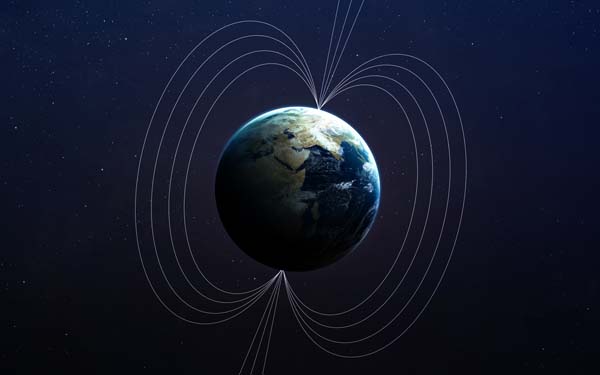Magnetism is a fascinating force of nature that plays a critical role in our daily lives. From the simple fridge magnet to the complex machinery used in industries, magnets are everywhere. Understanding how magnets work and their applications can open our eyes to their immense importance.
What is Magnetism?
Magnetism is a physical phenomenon produced by the motion of electric charges. It is a force that can attract or repel objects, depending on their material composition. The origins of magnetism can be traced back to ancient times when natural magnets, known as lodestones, were discovered. These rocks contain magnetite, a naturally magnetic mineral.
Magnetism arises from the behaviour of electrons in atoms. Electrons have a property called spin, and when a majority of electrons in an atom spin in the same direction, a magnetic field is created. This alignment of electrons is what makes certain materials magnetic.
Types of Magnets
There are three main types of magnets:
- Permanent Magnets: These magnets maintain their magnetism over time without requiring an external energy source. They are commonly made of materials like iron, cobalt, and nickel. Examples include bar magnets and fridge magnets.
- Temporary Magnets: These magnets act like permanent magnets only in the presence of a magnetic field. They lose their magnetism when the field is removed. Soft iron is an example of a material used for temporary magnets.
- Electromagnets: Electromagnets are created by passing an electric current through a coil of wire wound around a magnetic core. The strength of the magnetic field can be adjusted by varying the electric current. Electromagnets are widely used in industries.
How Magnets Work
The working of magnets is based on the magnetic field they produce. A magnetic field is an invisible force field around a magnet where its influence can be felt. It is strongest at the poles of the magnet, known as the north and south poles.
When two magnets are brought close together, the interaction between their fields determines whether they attract or repel. Opposite poles (north and south) attract, while similar poles (north and north or south and south) repel. This behaviour is governed by the laws of physics and is the foundation of many magnetic applications.
Properties of Magnets
Magnets exhibit several interesting properties:
- Attraction and Repulsion: Magnets attract materials like iron, cobalt, and nickel while repelling similar poles.
- Magnetic Field: The area around a magnet where its force is effective.
- Magnetic Domains: Tiny regions within a material where atoms align to create a magnetic effect.
- Curie Temperature: The temperature at which a magnetic material loses its magnetism.
Applications of Magnets
Magnets are used in various fields, ranging from household items to advanced technologies. Let us explore some common applications:
‘- Electronics and Communication
- Medical Field
- Industrial Machinery
- Transportation
- Household Items
- Education and Experimentation
- Space Exploration
Magnets are integral to the functioning of many electronic devices. Speakers, microphones, and headphones use magnets to convert electrical energy into sound. In communication systems, magnets help store data on devices like hard drives.
Magnets have several applications in medicine. Magnetic Resonance Imaging (MRI) machines use powerful magnets to produce detailed images of the human body. Magnets are also used in therapies to relieve pain and improve circulation.

Magnets are vital components in motors and generators. These machines convert electrical energy into mechanical energy or vice versa using the principles of magnetism. Industries ‘ conveyor belts and sorting systems also rely on magnets to separate materials.
Magnets play a significant role in transportation systems. Magnetic levitation (maglev) trains use magnets to float above the tracks, reducing friction and enabling high speeds. This technology is becoming increasingly popular in modern rail systems.
Magnets are present in various household appliances. Refrigerators, washing machines, and vacuum cleaners often use small magnets to function efficiently. Magnets also hold doors and cabinets closed securely.
Magnets are a key tool in education, helping students understand physics principles. Schools often use magnets for experiments to demonstrate magnetic fields and their effects.
In space research, magnets are used in satellite technology and spacecraft navigation systems. They help in stabilising and controlling the orientation of satellites in orbit.

Environmental and Sustainable Applications
Magnets contribute to environmental sustainability. For example, they are used in wind turbines to generate clean energy. Magnetic systems also help in recycling processes by separating metals from waste. These applications highlight how magnets support green technologies.
Fun Facts About Magnets
- Earth itself is a giant magnet, with a magnetic field that protects us from harmful solar radiation.
- Magnetic fields are invisible, but their effects can be visualised using iron filings.
- The strongest magnets in the world are neodymium magnets, made from rare-earth metals.
- Animals like birds and turtles use the Earth’s magnetic field for navigation.

Conclusion
Magnetism is a powerful and versatile force that has shaped many aspects of modern life. From everyday household items to groundbreaking technological advancements, magnets play a crucial role. By understanding the principles of magnetism, we can better appreciate the science behind their uses.
At Centre Point School, we strive to foster curiosity and exploration among students. Learning about topics like magnetism helps build a solid foundation in science, encouraging young minds to think critically and innovate for the future.





